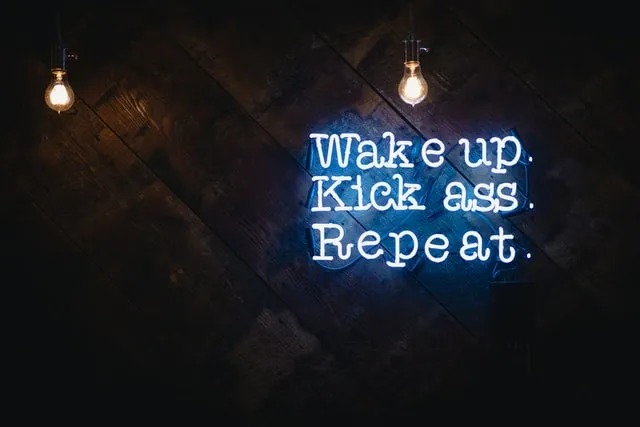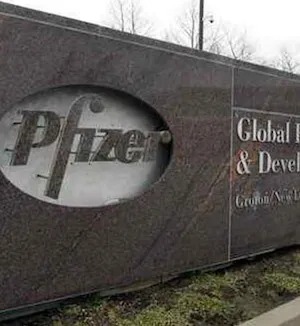
This month, we’re sharing the personal story of our founder and President to help you understand how Katrina Rogers Consulting started and where we are heading. The life science ecosystem is expanding in Spokane, Eastern Washington, and the Mountain Northwest. We invite you to join us and engage with our community. Do you have questions? Then please reach out and connect!
Introduction
Not many people know the full path I followed to become an entrepreneur. Like anyone, I could dig way back into my childhood, which I acknowledge was not wealthy but undoubtedly privileged. My parents were able to keep us fed and warm and always pointed me towards college. Nevertheless, I wouldn’t be in this place today without my husband Clay, whom I met and married just out of high school. Our mutual experiences during our first years together taught me much about business and finances, and his constant support has been my North Star.
You can watch me tell my story in the video below:
Early Days
My first degree was an Associate of Science from Spokane Falls Community College. I’m pleased to have started college there because I met many supportive and fascinating people and thrived in my chemistry and calculus courses. The nonscience core and elective courses were also fun, and I benefited from the new experience of commuting by public transportation. Clay joined me at the “Falls” during my second year and quickly won an ROTC scholarship to Gonzaga University. While he finished his degree, I worked on the family farm and as a store clerk to fill out our support. Clay’s graduation led to 4 years of travel and adventure with the US Army. At one post, I used the opportunity to take my Analytical Chemistry over the summer, relieving the hot afternoons in the lab with a jump in the swimming pool. I also worked at an environmental test lab and in a veterinary clinic during this period. I gained experience at both workplaces that opened doors for me later.
I took my transcripts to the University of Washington to finish a chemistry degree. Fortunately, my academic performance was good enough to receive a full-tuition scholarship, so we weren’t fully starving as students. Unfortunately, Seattle then (as now) was still expensive, so both of us had to work to afford a decent apartment close to campus and regular meals. After a brief stint at a clothing store, I found a job as and testing chemist at the environmental consulting firm Analytical Resources, Inc. (ARI). My ARI job was another excellent opportunity since I could work 35 hours per week, on Saturdays, during the semesters, and the round-trip bus ride wasn’t too long. We had a lot of fun during those few years, and when Clay found his position at ARI, we were pretty comfortable. During my senior year, I had the great pleasure of working with Professor Yeshayau Pocker in his research lab. Working alongside Greg Spyridis and Michael Corey, I had a blast learning to separate and isolate C60 and C70 fullerenes from a raw mixture and explore both molecules’ electronic states using molecular modeling software. Presentation at an American Chemical Society Regional Meeting, induction into Phi Beta Kappa, and graduation with Distinction were grace notes in my UW Husky experience. I’m still a proud member of the alumni association.

Corporate Warrior
I started my search for a career role long before graduation day. Graduate school was intellectually attractive, but I’m a pragmatist, and both Clay and I wanted to move on to something new. My analytical chemistry degree, combined with regulatory (environmental testing) and animal experience, made me an attractive fit for the Drug Metabolism group at Pfizer Central Research. I flew from Seattle to Groton, Connecticut, for my interview, where I learned that metabolism scientists study how a new drug candidate is absorbed, distributed, metabolized, and eliminated from a living body. Analytical chemistry is a crucial skill for metabolism studies, which require drug concentration measurements in both in vivo and in vitro matrices. Pfizer made it easy for us to say yes to the offer, and we moved between Christmas and New Year so I could start work in January.
At Central Research, I spent two years in a traditional discovery project team working with chemists, biologists, and toxicologists to advance a lead and backup candidate to treat chronic mental illness. My role was to study new candidate molecules’ pharmacokinetics by measuring concentrations using liquid chromatography (LC) with different detectors. Candidate attrition can be high in discovery projects, and ours started dose-ranging and preliminary toxicology studies before we hit a development barrier that killed the project. After an appropriate mourning period (along with a well-lubricated wake), I worked on in vitro models of hepatic clearance, focusing on hepatocytes and tissue slices. Next, I expanded my instrument repertoire to include mass spectrometry with direct and LC interfaces. It wasn’t long before I joined a specialty group developing and using custom instrumentation to support higher-throughput screening of the Pfizer compound library. At the peak, we were making measurements on over a thousand compounds a week in two types of screens. Pfizer Central Research was grand in those days, with a fully stocked library, on-site services including a café and store, and over-the-top launch parties for new medicines. Clay was with me every step of the way, first working on the new cGMP synthesis plant, then in clinical data management, and lastly, software development.
Contract Research

After a few years of metabolism science and the New England countryside, we were ready for a change in venue and location. Our preference to return to the West Coast led to several tantalizing interview trips. Finally, a trip to Seattle in the summer of 1999 for the BIO convention eventually led to a job offer from the contract research organization (CRO) MDS Pharma Services. Moving to a CRO was not popular in big pharma at that time, though another colleague had launched his own bioanalytical CRO not long before I received the offer. They wanted to add an expert in metabolism screening assays to the Bothell, Washington team to complement the pharmacology offerings from newly acquired PanLabs in Taiwan. I started at MDSPS in January 2001, and it was a whirlwind first year, featuring the magnitude 6.8 Nisqually earthquake at the end of February and the September 11 attacks. In addition, we were trying to buy a house in Bothell that fall, which added to the overall drama. Metabolism screening work continued, however, and our service lines expanded to include a multi-CYP450 inhibition assay and preclinical IND-enabling metabolism studies.
Relocation to a new building allowed me to lead the workspace design and equipment transfer for the metabolism services. The team expanded in 2004 with pharmacokinetic and bioanalytical services and new colleagues. Working with this group across the US, Europe, and the Pacific Rim was exciting. Many CROs (including MDSPS) were expanding globally, and the discovery/preclinical services market was starting to shift away from big pharma and towards smaller and virtual companies. Promotion to Technical Director for Pharmacology/Metabolism in 2008 meant I worked as a scientific advisor for clients and a thought leader for the business team. We tested a collaboration to provide rapid discovery screening data using a combination of Shanghai, Taipei, and Seattle facilities. We pitched significant proposals, traveled internationally, and wrestled with negative FDA inspections at some sister facilities. The team worked and played hard, and I’m proud to call them friends, though we suffered a tough RIF in 2009. Clay excelled in several B2B e-commerce roles during the same period when Amazon.com was rapidly growing to become a household name.
Pivot
As the aughts decade ended, eldercare responsibilities were increasingly an issue, which meant relocating closer to Spokane, where we now reside. My expertise in pharmaceutical analytical chemistry attracted the attention of the quality team at sterile drug products manufacturer Jubilant HollisterStier (JHS). It led to an offer to join the laboratory as a Senior Scientist and Supervisor. The role was a pivot that expanded my pharmaceutical expertise into chemistry, manufacturing, and controls and added medical devices to my repertoire. Many colleagues commented on the unusual breadth of my medical products knowledge and skills during this period. In addition, the move and subsequent tenure at JHS were fiscally sound since Spokane was and is a lower-cost market than the Seattle Metro area. Clay’s career blossomed, as well, since his e-commerce experience from Seattle proved influential at startup etailz. But something was still missing for me, which turned out to be building my own company.

Launch
After exploring several paths, I realized my career trajectory endowed me with a breadth of knowledge and network not readily available to executives in the startup life sciences space. Furthermore, expanding life science investment interest meant investors sought due diligence help and leadership assistance with their founder teams. These factors prompted me to launch my executive services firm in late 2017. I continued to work full-time at JHS (thanks to a generous employee agreement), working part-time in the evenings and weekends, building the business structure and network to connect with innovators, investors, and leaders in the life science space. I started working with Meg Lindsay of Greater Spokane Incorporated to elevate STEM students from our regional high schools as candidates for employment. Later that summer, I met serial entrepreneur and professor Dr. Glenn Prestwich of Washington State University-Spokane. Glenn introduced me to his network at WSU, tapped me to host a panel at a translational medicine symposium in the fall, and facilitated my adjunct faculty appointment in the College of Pharmacy and Pharmaceutical Sciences in 2019 (which led me to my talent development projects). Then, in the spring of 2019, I met two marketing experts, Bobbie Foedisch (who reached out at a Life Science Washington convention) and Josh King (introduced by Meg Hulsey of Startup Spokane/Craft3). They have taught me much about reaching my target audience of innovators, investors, and leaders via thoughtful engagement on social media and in real life. By the end of 2019, I started working with Diane Lashinsky, senior director of school engagement for the nationally recognized K-12 STEM program Project Lead The Way (PLTW), and Gregg Godsey, master teacher and PLTW trainer at WSU. We proposed a grant project to introduce PLTW students in the biomedical sciences to their first career paid work experiences. My adjunct faculty position came in handy for this proposal since it allowed WSU to sponsor us. We’re in the second year of this project, and it’s been an absolute joy to work with this team.
Growth
I’ve observed that one successful opportunity leads to another, which my experiences have reinforced since 2019. First, the CCW project started in 2020 and has been virtual for almost the entire time. Next, I joined a team of like-minded WSU personnel to write more proposals, including one that kicked off the Flexible Infrastructure for Resilient Entrepreneurship (FIRE) program to create resources for entrepreneurs across Eastern Washington, North Idaho, and Western Montana. My part of this program is Workforce Innovation Network Development (WIND, and yes, we like our acronyms!). We are developing a network to provide training and a credential for the knowledge, skills, and abilities needed for skilled technical roles in the life sciences. These efforts and the continued growth of my business put me in the right place to join a team developing a regional innovation cluster to grow, attract, and build the contract services needed for a complete pharmaceutical and medical device supply chain in the mountain Northwest. I’m proud to say our work has received plenty of attention, along with initial funding from the Washington State Department of Commerce. It’s also led to a couple of board positions for me, with Biotility at the University of Florida’s BACE Advisory Board and the Life Science Washington Institute.
What’s Next?

Every day I get to work with lively, intelligent, and focused people on exciting projects that contribute to our knowledge, businesses, and ecosystem. There’s room for people with all backgrounds in this work, and nobody knows what they want to or will be when they grow up. So if you are interested in elevating the conversation, bringing “outsiders” to the table, and making the pie bigger, you’ve never been in a better era to get started. You’ll find people who tell you you can’t do something, but you’ll find more who admire and support your effort if you keep looking.

Reach out to me if you want to know more about innovation clusters or discuss your medical product development or business challenges.
https://www.linkedin.com/company/katrina-rogers-consulting-llc
https://calendly.com/katrinarogers
Text Copyright © 2022 Katrina Rogers
Headline Photo courtesy of Justin Veenema on Unsplash – https://unsplash.com/photos/zP80MWApkn8
